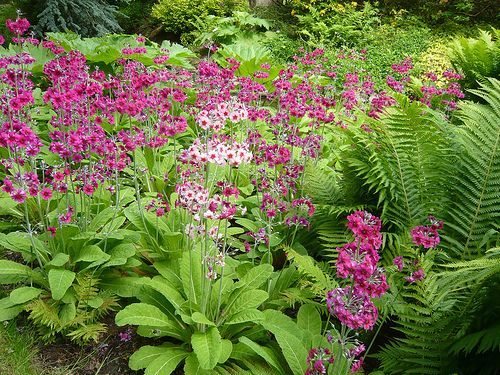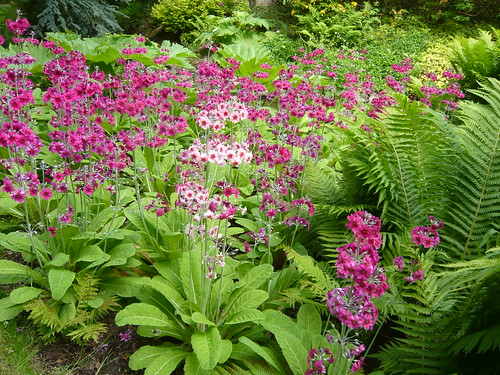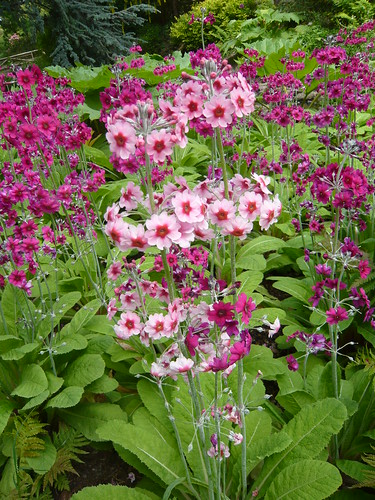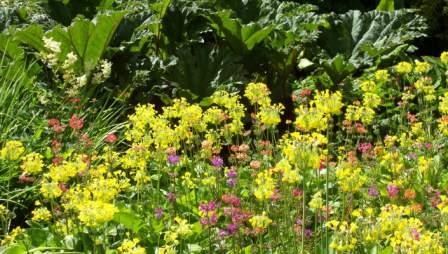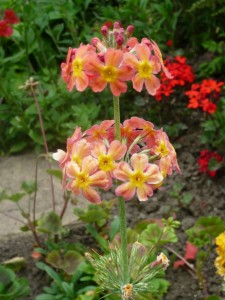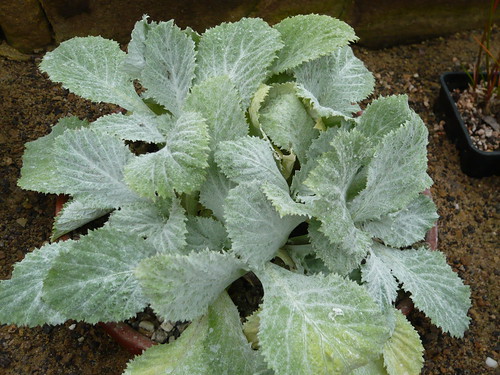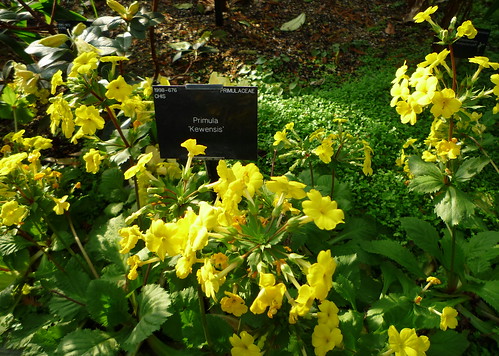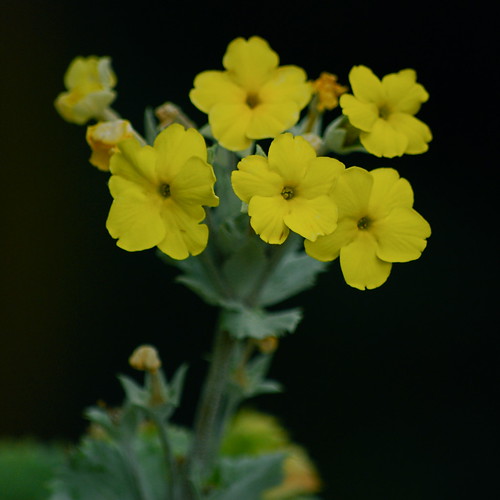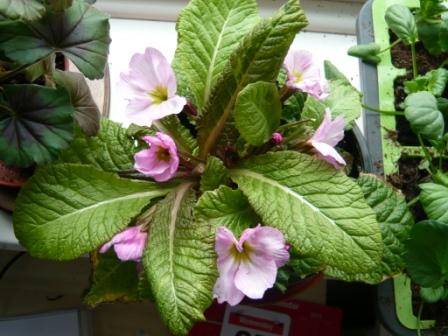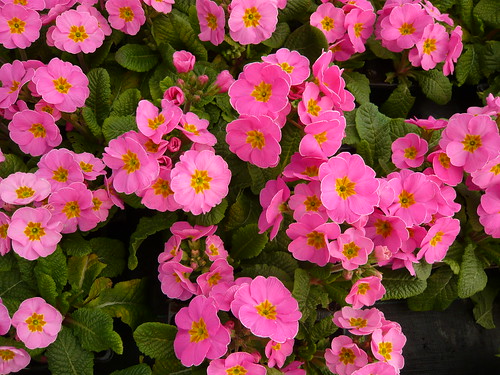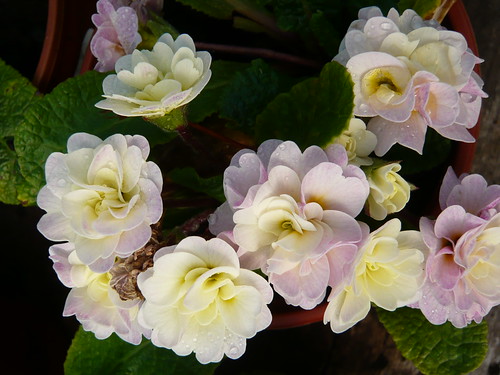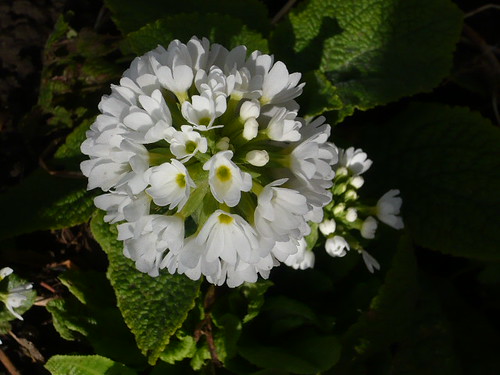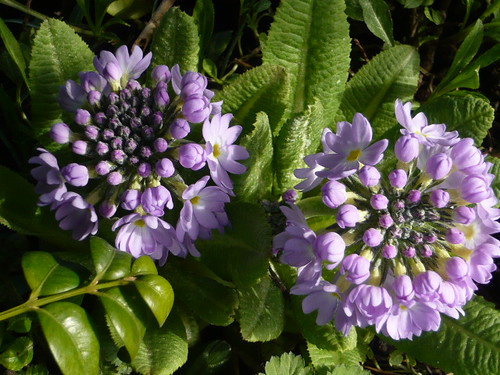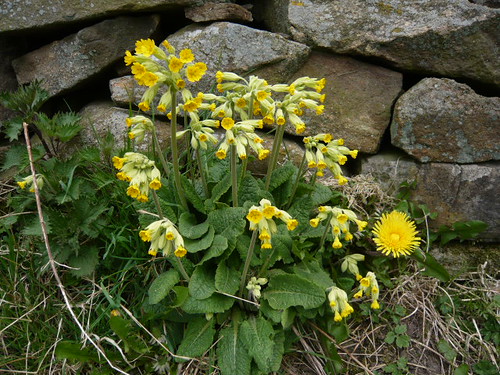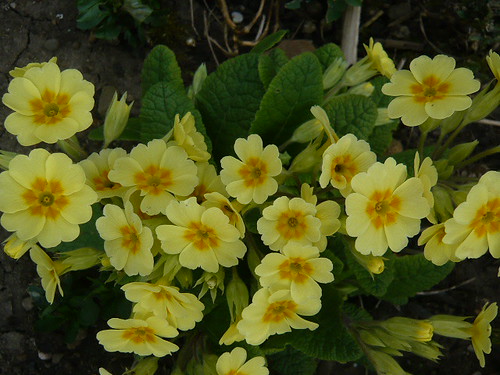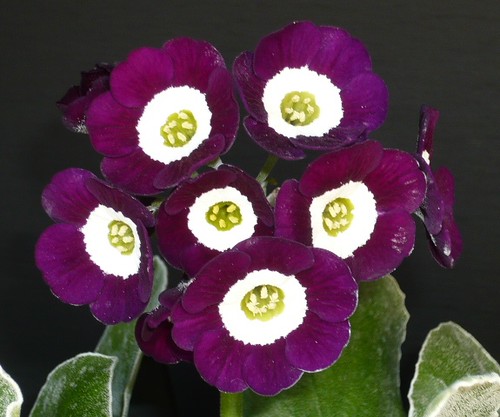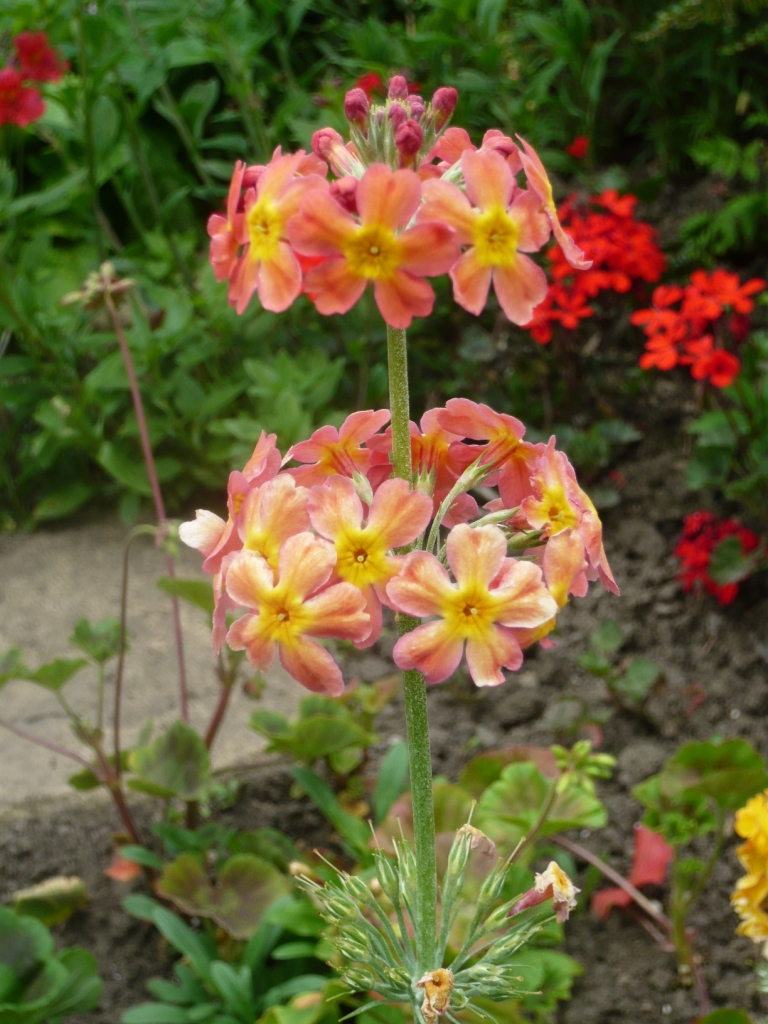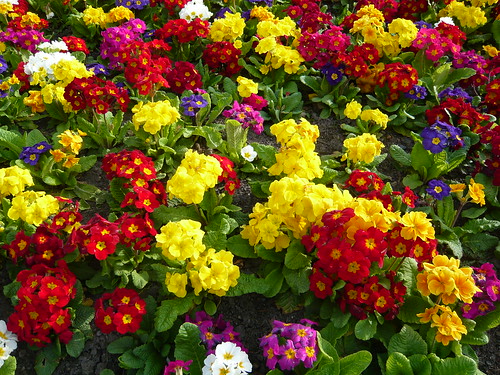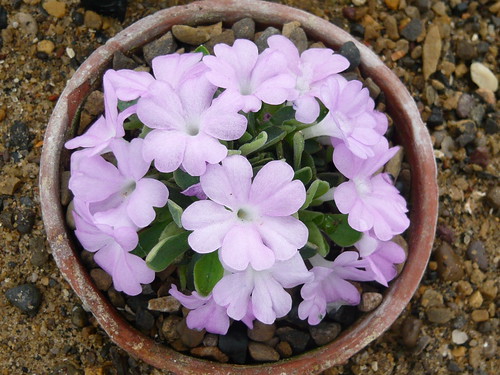Primary Coloured Spring Bulbs & Primula Bed

If you are looking for a show stopping display of spring flowers then why not try planting  primary colours of Red, Blue and Yellow in the same bed.
A sweeping display of blocks of colour contrasting with the other primary colours can have a stunning effect. Over planting with primary-coloured annuals will help the design continue through summer. This list starts off with bulbs in the primary colours but you can use whatever takes your fancy, as you will see, I like Polyanthus.
More Primula seeds from Thompson & Morgan
Reds mainly Tulips
- Small early red Tulips are Daylight and Show-winner.
- For elegant Tulip shapes try Fosteriana Red Emperor, Charles or the more muted Rosy Dream.
- Abba and Carlton are doubles to sing about.
- Appledorn, Hollands Glory and Red Impressions remind you where most tulips come from but Barbados is a stunning fringed red to add to your selection.
Blues avoiding Purples
- Muscari Azureum or other Grape Hyacinths are some of the best blues. I like Blue Spike, Super Star and Valerie Finnis.
- Hyacinths, Crystal Palace, Blue Star, Delft Blue, Ostara and Kronos are just some of the blue varieties to try. Personally I would not bother with the yellow Hyacinths such as City of Harlem
- Camassia, Chinodoxa and Anemone ‘Lord Lieutenant’Â are varied bulbs flowering blue.
- Dutch Iris are some of the finest blue flowers, Hildegard and Sapphire Blue. Iris reticulata, Joyce and Cantab are also well worth growing.
Yellow Aconites to Zantedeschia
- For something a bit different try yellow Iris Danfordiae, Fritilliaria Raddena or Ixia Yellow Emperor.
- Crocus species Chrysanthus Dorothy, Fuscotinclus and Romance are small yellow crocus whilst Golden Mammoth is just what it says, Golden and Mammoth.
- Jonquilla Daffodills grow to about one foot and bloom freely. Baby Moon, Trevithian and the double Pencrebar are worth trying.
- King Alfred did more than burn the cakes he had ‘the’ yellow Daffodil named after him.
- Tamara, Carlton and Fortune are worthy substitutes
